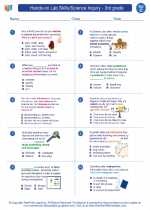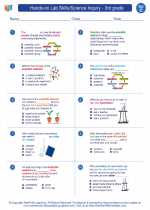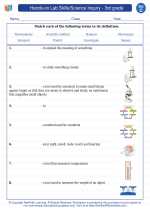Deserts
A desert is a dry, barren area of land where there is little or no precipitation. Deserts can be found on every continent and vary in size and characteristics. They are characterized by their extreme temperatures, limited vegetation, and unique ecosystems.
Types of Deserts
There are four main types of deserts:
- Hot and Dry Deserts: These deserts have high temperatures during the day and cooler temperatures at night. Examples include the Sahara Desert in Africa and the Mojave Desert in the United States.
- Cold Deserts: These deserts have cold winters and may experience some snowfall. Examples include the Gobi Desert in Asia and the Great Basin Desert in the United States.
- Coastal Deserts: These deserts are located near coastlines and are influenced by ocean currents. Examples include the Atacama Desert in South America and the Namib Desert in Africa.
- Semiarid Deserts: These deserts have slightly more precipitation than other types of deserts but are still very dry. Examples include the Sonoran Desert in the United States and the Simpson Desert in Australia.
Adaptations of Desert Plants and Animals
Plants and animals that live in deserts have developed unique adaptations to survive in the harsh desert environment:
- Plants: Many desert plants have long roots to reach water deep underground, thick stems to store water, and waxy coatings to prevent water loss through evaporation.
- Animals: Desert animals have adapted to conserve water and tolerate high temperatures. Some have specialized ways of obtaining water, such as obtaining moisture from their food or burrowing underground during the hottest part of the day.
Study Guide
Here are some key points to remember about deserts:
- What are the main types of deserts, and what are their characteristics?
- How do plants and animals adapt to survive in the desert environment?
- What are some examples of deserts around the world, and what makes each one unique?
- What are some human activities that can impact desert ecosystems?
For further study, you can research specific deserts and their flora and fauna, as well as the conservation efforts aimed at protecting desert ecosystems.
.◂Science Worksheets and Study Guides Third Grade. Hands-on Lab Skills/Science Inquiry - 3rd grade
Study Guide Hands-on Lab Skills/Science Inquiry - 3rd grade
Hands-on Lab Skills/Science Inquiry - 3rd grade  Worksheet/Answer key
Worksheet/Answer key Hands-on Lab Skills/Science Inquiry - 3rd grade
Hands-on Lab Skills/Science Inquiry - 3rd grade  Worksheet/Answer key
Worksheet/Answer key Hands-on Lab Skills/Science Inquiry - 3rd grade
Hands-on Lab Skills/Science Inquiry - 3rd grade  Worksheet/Answer key
Worksheet/Answer key Hands-on Lab Skills/Science Inquiry - 3rd grade
Hands-on Lab Skills/Science Inquiry - 3rd grade  Worksheet/Answer key
Worksheet/Answer key O-W-L
O-W-L  Vocabulary/Answer key
Vocabulary/Answer key Hands-on Lab Skills/Science Inquiry - 3rd grade
Hands-on Lab Skills/Science Inquiry - 3rd grade  Vocabulary/Answer key
Vocabulary/Answer key Hands-on Lab Skills/Science Inquiry - 3rd grade
Hands-on Lab Skills/Science Inquiry - 3rd grade 

 Worksheet/Answer key
Worksheet/Answer key
 Worksheet/Answer key
Worksheet/Answer key
 Worksheet/Answer key
Worksheet/Answer key
 Worksheet/Answer key
Worksheet/Answer key
 Vocabulary/Answer key
Vocabulary/Answer key
 Vocabulary/Answer key
Vocabulary/Answer key

The resources above cover the following skills:
Science as Inquiry and Process: A student should understand and be able to apply the processes and applications of scientific inquiry. A student who meets the content standard should:
Develop an understanding of the processes of science used to investigate problems, design and conduct repeatable scientific investigations, and defend scientific arguments.